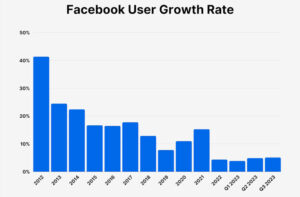Facebook remains a key player in social media, influencing how we connect and receive information.
Understanding the Facebook algorithm can be complex for users, marketers, and content creators. This article provides a thorough and current examination of the mechanisms that determine what shows up on your Feed.
If you want to boost your Facebook presence or just want to understand the digital forces shaping your online experience, read on!
The Facebook algorithm uses programming rules and machine learning to decide what appears in your Facebook Feed. It selects posts, Stories, and ads based on your interactions, content type, and post recency, aiming to deliver a personalized and engaging experience.
How the Facebook Algorithm Works in 2024
Facebook aims to show posts that align with users’ interests and values. This includes content from friends, Facebook Groups, and liked pages, as well as relevant posts from new sources.
The algorithm focuses on two types of content:
- Connected Content: Posts from friends, Facebook Groups, and liked pages.
- Recommended Content: Posts likely to interest you from pages or people you don’t follow.
Note: Facebook ads are also shown, but they are driven by targeted marketing strategies rather than the core algorithm.
How Does the Facebook News Feed Algorithm Work in 2024?
In 2024, Facebook’s algorithm is a sophisticated AI-driven system designed to deliver content that matches users’ preferences. Although Meta recognizes the algorithm’s limitations and acknowledges it may never be perfect, there is a strong commitment to continually refine it to meet user needs.
The Facebook News Feed algorithm is based on four main ranking factors:
- Inventory
The algorithm starts by gathering potential content for the feed. This includes posts from friends, followed Facebook pages, and groups the user is part of. Content that violates Facebook’s Community Standards is excluded.
- Signals
The algorithm then evaluates various signals to determine the relevance of each piece of content. These signals include:
- Post timing
- Identity of the poster
- User interactions with the poster
- Content type (e.g., links, photos, videos)
- Engagement with similar posts
- User’s local time
- Internet connection speed
- Predictions
Based on these signals, the algorithm predicts the content’s relevance to the user. For example, if a user interacts more with branded posts in the morning, the algorithm will prioritize similar content during that time.
- Relevance
Each piece of content receives a relevance score. Higher-scoring content appears first in the Feed. The algorithm also includes recommended content and avoids showing consecutive posts from the same creator or similar content types back-to-back to maintain variety.
How Does the Facebook Reels Algorithm Work in 2024?
In 2024, the Facebook Reels algorithm focuses on optimizing short-form video content. For creators and marketers aiming to boost engagement and visibility on Reels, understanding these key factors is crucial:
- User Engagement Priority: The algorithm prioritizes metrics like watch time, likes, comments, and shares. Reels watched from start to finish are especially favored.
- Content Originality and Quality: Reels with original content receive better distribution. Facebook limits the reach of videos that lack originality.
- Utilization of Trending Elements: Reels that use trending audio, effects, and topics tend to reach a wider audience.
- Community Guidelines Compliance: Videos violating Facebook’s Community Guidelines are less likely to be promoted and may be removed.
- Personalized Recommendations: The algorithm suggests Reels based on users’ past behavior and interests.
- Algorithmic Learning and Adaptation: The algorithm continuously learns from user behavior and feedback, adapting to changes in preferences and trends.
How Does Facebook Recommend Content?
Facebook’s content recommendation system offers brands and creators a chance to reach new audiences without paid ads. Each user receives unique recommendations based on their individual interests and interactions.
To increase the chances of your content being recommended, it must adhere to Facebook’s guidelines. All content must comply with Facebook’s Community Standards, which cover issues like violence, crime, self-injury, child exploitation, nudity, bullying, spam, inauthentic behavior, and misinformation.
However, meeting these standards doesn’t guarantee that your content will be recommended. Facebook’s Recommendations Guidelines are more stringent and ensure that only high-quality, relevant content is recommended.
To enhance your chances of being recommended, avoid these five types of content:
- Content Compromising Safety: Includes discussions of self-harm, suicide, eating disorders, sexually explicit material, or promotion of regulated products.
- Sensitive or Low-Quality Content: Such as dubious health supplements or questionable financial schemes.
- Disliked Content: Includes clickbait or engagement bait.
- Low-Quality Publishing: News content with unclear authorship.
- False or Misleading Content: Includes fake news or claims debunked by fact-checkers, such as misinformation about vaccines.
Tips for Working with Facebook’s Algorithm
To improve your Facebook marketing efforts and align with the algorithm, follow these strategies:
- Create Relevant Content for Your Target Audience
Focus on producing high-quality content that resonates with your audience. Content that is engaging and relevant is more likely to receive interactions, which signals to the algorithm that users want to see more of your posts. Analyze performance metrics in Facebook Insights to refine your strategy and improve engagement.
- Post at the Right Time
Timing matters. Post when your audience is most active to maximize visibility. Here are the best times to post on Facebook:
- Mondays: 9 AM, 3 PM – 4 PM
- Tuesdays: 9 AM, 1 PM
- Wednesdays: 9 AM – 10 AM, 1 PM – 4 PM
- Thursdays: 10 AM, 1 PM – 3 PM
- Fridays: 9 AM, 1 PM – 3 PM
- Saturdays: 12 PM – 1 PM
- Sundays: 12 PM – 1 PM
Use scheduling tools like SocialBee to automate posting during these peak times, ensuring your content reaches your audience effectively.
Additional Tips:
- Engage users and encourage interactions.
- Experiment with various content types.
- Avoid clickbait and engagement bait.
- Steer clear of spreading fake news.
- Post user-generated content (UGC) and tag people.
- Create compelling video content.
- Don’t overlook basic status updates.
- Invest in ads for your most impactful content.
Tips for Working with Facebook’s Algorithm
1. Don’t Use Clickbait and Engagement Bait
Facebook’s algorithm penalizes clickbait and engagement bait. Clickbait involves sensational headlines like “The one acne treatment that works,” which overpromise and underdeliver. Engagement bait uses manipulative prompts, such as “Like if you’re an early bird, share if you’re a night owl.” Instead, create content that encourages genuine engagement and adds real value.
2. Engage Facebook Users and Encourage Interaction
Facebook values ‘meaningful interactions.’ Craft posts that prompt users to engage and spark conversations. Effective interaction includes both inspiring users to comment and responding to their feedback. Tools like SocialBee’s Engagement Module can help streamline this process and enhance audience engagement.
3. Avoid Spreading Fake News
Facebook actively combats misinformation. Sharing fake news or deceptive content can lead to severe consequences, including being banned from the platform. Ensure all content is accurate and fact-checked to maintain credibility and avoid penalties.
4. Experiment with Different Types of Content
Diversify your content to find what resonates with your audience. Experiment with photos, text posts, GIFs, Reels, videos, and live streams. Use tools like SocialBee’s AI Post Generator to generate new ideas and keep your content fresh and engaging.
5. Post UGC and Mention People in Your Posts
Showcase user-generated content (UGC) and tag users who engage with your brand. This not only highlights your community but also increases engagement. Transform positive reviews into posts and tag reviewers to boost interaction and attract new followers.
6. Create Engaging Video Content
Focus on producing original, high-quality videos. Utilize various formats such as Reels, Stories, and Live videos. Optimize videos for mobile by using vertical formats, clear overlays, and concise text to keep viewers engaged.
7. Don’t Forget the Basic Status Post
Simple status posts can be effective. Use them to convey straightforward information and maintain engagement. While they shouldn’t be your only type of content, they offer value in certain contexts.
8. Put Ad Dollars Behind Your Most Impactful Content
Boost posts that perform well organically. This approach maximizes reach while reducing cost-per-click (CPC) rates. Avoid spending on underperforming content, as this can lead to higher costs with minimal returns.



